Why explore Saturn and its moons
The crown jewel of our solar system has complex rings, diverse moons and possible life to find.
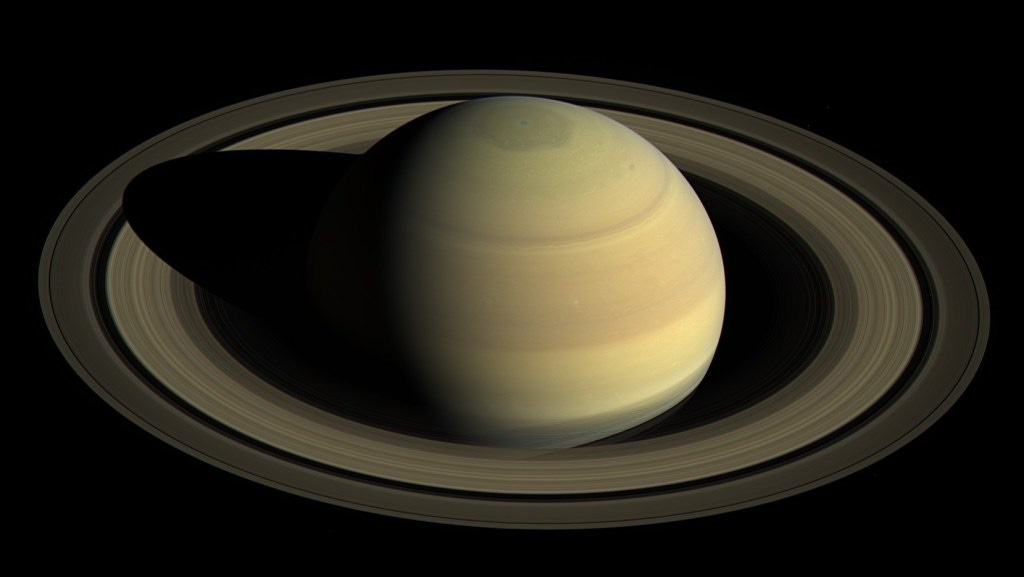
Why study Saturn?
The real Lord of the Rings is Saturn, a massive outer planet boasting a set of rings about 27 Earths wide. Being a gas giant like Jupiter, Saturn shares many of its attributes: a strong magnetic field generated by churning metallic hydrogen deep inside, raging storms in its gaseous upper atmosphere, and a diversity of planet-like moons that are worlds unto themselves. Saturn’s rings and larger moons are visible even from small backyard telescopes.
Saturn was born right after Jupiter, roughly 4.5 billion years ago in the solar system’s early days. Both planets probably formed closer to the Sun and then migrated out to their current positions about 4 billion years ago. Their gravity likely lofted asteroids and comets all over the solar system, some of which slammed into early Earth and may have brought water here.
We know of more than 4,000 exoplanets—worlds orbiting other stars—and the statistics show us that most stars have planets. Many are Jupiter and Saturn-like words close to their stars, supporting the idea that our own gas giants moved during the solar system’s early days. One exoplanet we’ve found appears to have rings 200 times wider than Saturn’s! By studying Saturn and comparing it to similar exoplanets, we learn how solar systems evolve.
What are Saturn’s rings like up close and where did they come from?

Saturn’s rings are made from chunks of mostly water ice ranging in size from dust specks to houses to mountains. The largest chunks, known as moonlets, have enough gravity to clear small gaps, distort the rings’ shape, and cause wave-like disturbances.
Scientists think Saturn’s rings formed when either a large moon got too close to Saturn and was ripped apart due to intense gravitational forces or that the rings are simply leftover material from the time Saturn formed. The rings are being gradually pulled into Saturn and will disappear completely within 300 million years. We don’t know why the other giant planets Jupiter, Uranus and Neptune don’t have such a stunning set.
Meet Saturn’s moons
Like our other three outer planets, Saturn is like a mini solar system, boasting at least 82 moons, the largest of which are geologically active.
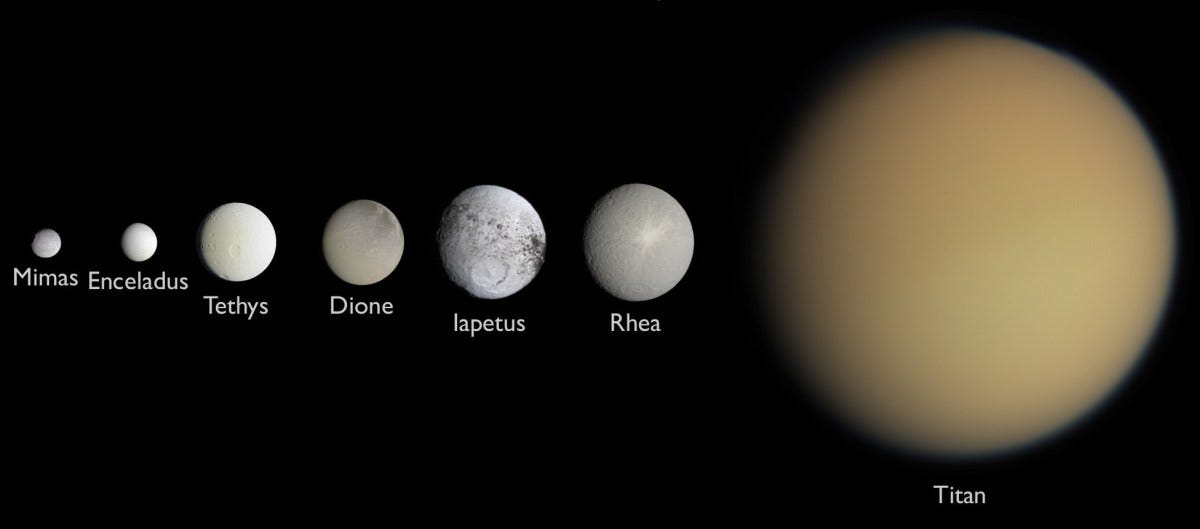
Titan
Larger than Mercury, Titan is the only moon in our solar system with a substantial atmosphere, much denser than Earth’s in fact. Titan is also the only world other than Earth to have flowing liquids on its surface – except that its seas and lakes are filled with raining hydrocarbons instead of water. Winds on Titan carve its surface much like Earth, a fact most noticeable in its icy dunes. Despite being so farther out and receiving little sunlight, Titan manages to have a striking resemblance to Earth.
Enceladus
The 500-kilometer-wide Enceladus boasts a liquid saltwater ocean beneath its thick icy crust. This water escapes to space in huge plumes via geysers on its surface. These water plumes are known to contain complex organic molecules, the building blocks of life as we know it.
Snowball worlds
The small moon Mimas, that looks eerily similar to a ‘Death Star’ from Star Wars, may have a subsurface ocean too, though material from the ocean does not appear to leak up to the surface. The three sister moons––Tethys, Dione and Rhea – are cratered snowball worlds with rocky cores.
Photogenic oddballs
Some of Saturn’s moons have odd shapes and surfaces––like the sponge-like Hyperion, two-faced Iapetus whose dark half is coated with escaped material from the comet-like moon Phoebe, and finally Pan, whose gravity has grabbed enough material from Saturn’s rings to make it look like a flying saucer!
A brief history of Saturn exploration
In the 1650s, Christiaan Huygens discovered Saturn’s rings and its largest moon Titan using his telescope. Shortly after, Giovanni Cassini discovered the largest gap in Saturn’s rings, now named after him, and four more moons. Telescopic studies were the only way to study Saturn until the advent of the Space Age, which allowed sending probes to Saturn.
NASA’s Pioneer 11 was the first spacecraft to visit Saturn, flying past the planet in 1979 and revealing yet another outer ring. Voyager 1 flew by a year later, swinging by Titan to get a good look at the moon’s thick orange atmosphere. Then Voyager 2 flew closer to Saturn itself, discovering the planet’s upper atmosphere was a chilly -200 degrees Celsius and that trace amounts of ammonia crystals give Saturn its pale yellow hue.
In 2004, Cassini-Huygens, a joint robotic mission by NASA and the European Space Agency, became the first spacecraft to orbit Saturn. One of the most revolutionary space missions of all time, Cassini spent 13 Earth years—almost half a Saturn year—watching how the planet and its moons changed with the seasons as they orbited the Sun.
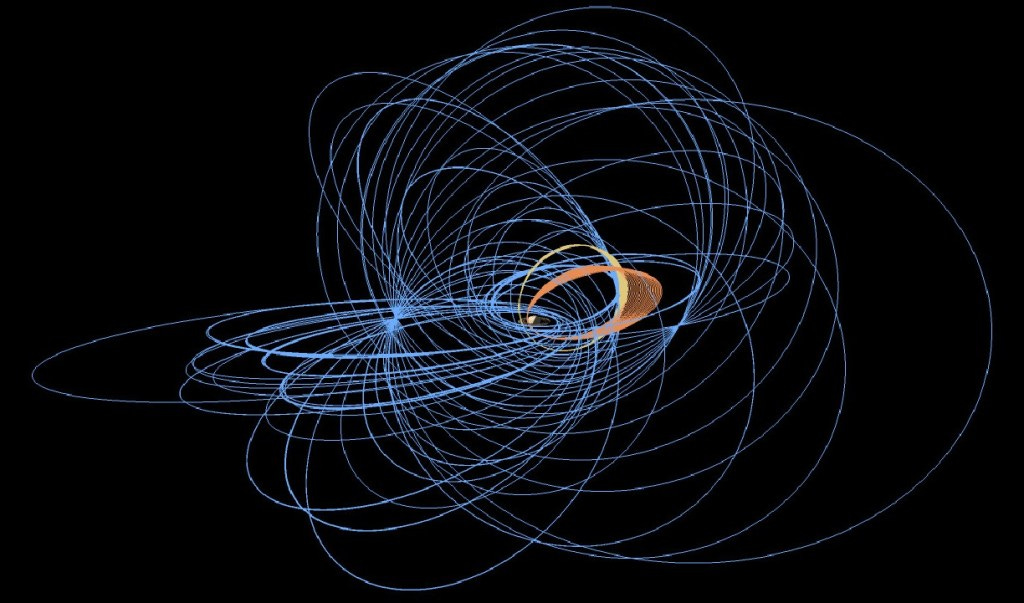
Cassini images showed that the two-Earths-wide hexagonal jet stream on Saturn’s north pole first seen by Voyager was still there, decades later! The vortex has a central eyewall akin to Earth’s hurricanes and is remarkably symmetric. Cassini discovered a slightly smaller eyewalled-vortex on the south pole too, albeit circular in shape. It’s possible these polar vortices have been around for billions of years but their origin and powering mechanism is a mystery. Cassini also observed a planet-wide megastorm that appears roughly every Saturn year—30 Earth years. It saw lightning flashes in the storm more powerful than those on Earth.
Cassini also studied radio emissions from charged particles trapped in Saturn’s huge magnetic field, the latter powered by rotating metallic hydrogen in its interior. Measuring these radio emissions helped scientists make progress on accurately figuring out Saturn’s puzzling rotation rate. Over the mission’s thirteen years, Cassini’s instruments successfully mapped the structure and shape of Saturn’s magnetic field. By doing so, it found that Saturn’s E-ring, formed by escaping material from Enceladus, was not just actively feeding material into Saturn’s magnetic field, but also distorting it!
Habitable moons?
Shortly after its arrival at Saturn, Cassini released the European Huygens probe, which landed on Titan’s surface in 2005—a first for any world in the outer solar system. As the Huygens probe slowly descended through Titan’s nitrogen-rich atmosphere, it detected methane clouds and even organic compounds, another sign of complex chemistry on Titan. Post-landing, the probe took the first ever images from Titan’s surface and survived for two hours, despite frigid temperatures of about -180 degrees Celsius.
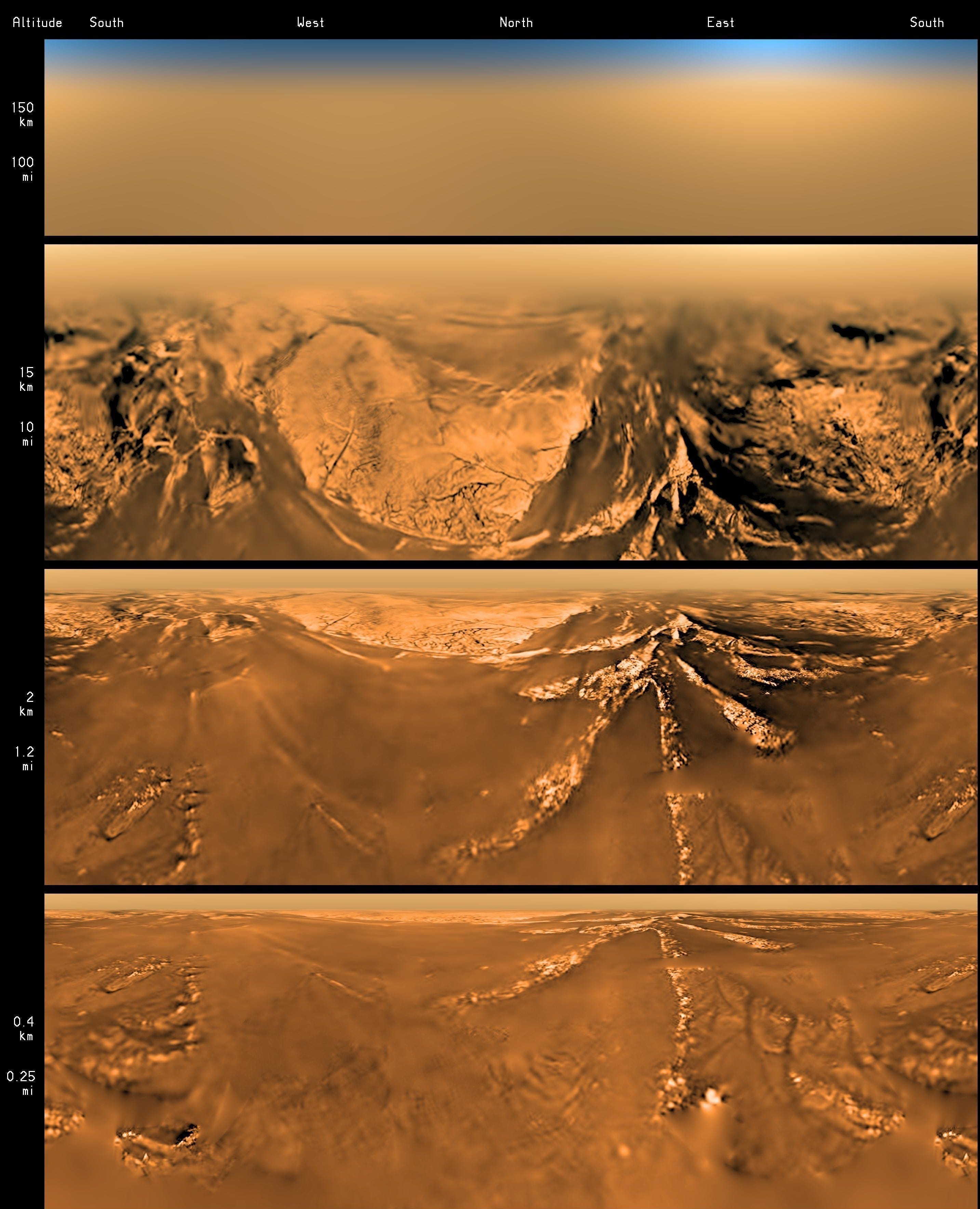
While orbiting Saturn, mission controllers tweaked Cassin’s orbits such that it flew by Titan 127 times and by Enceladus 23 times to study these worlds up-close over the mission lifetime.
To unveil what Titan was hiding beneath its opaque atmosphere, Cassini mapped the surface with a cloud-penetrating radar and an infrared spectrometer. To everyone’s surprise, it found lakes and seas on Titan and clear evidence of flowing rivers, all filled with liquid hydrocarbons instead of water. Cassini’s views of vast regions of icy dunes and mountains reinforced resemblance to Earth. Gravity measurements by Cassini and radio measurements by Huygens showed that Titan likely harbors a large subsurface ocean of water. Could Titan’s hydrocarbon seas and subsurface ocean host exotic life forms?
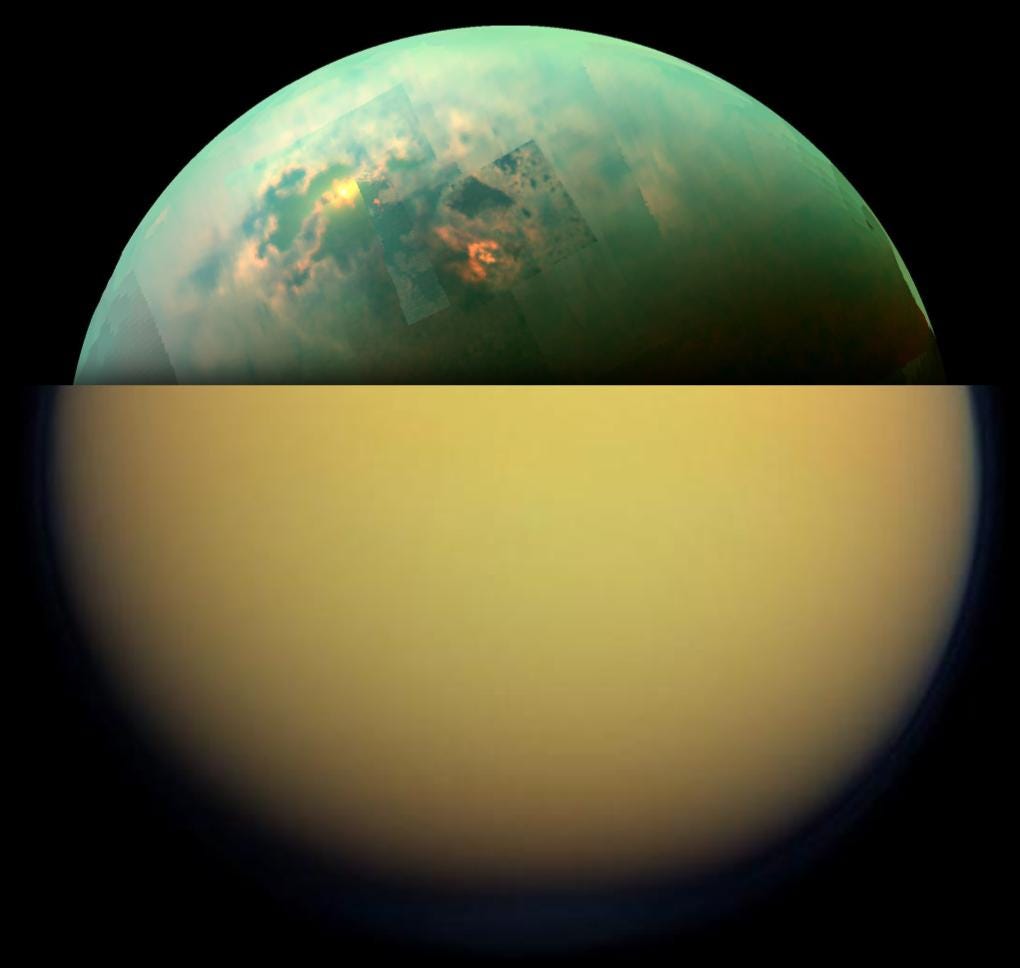
Cassini’s revelations of bright and icy Enceladus were perhaps even more intriguing. It found that Saturn’s faint but large E-ring gets its particles from towering water plumes erupting from geysers on Enceladus! In fact, Cassini flew right through Enceladus’ plumes a few times and detected a variety of organic molecules using its onboard mass spectrometer, which determines the elemental makeup of materials passing through it. Gravity measurements further supported the idea that Enceldas hosts a huge ocean of salt water beneath its surface.
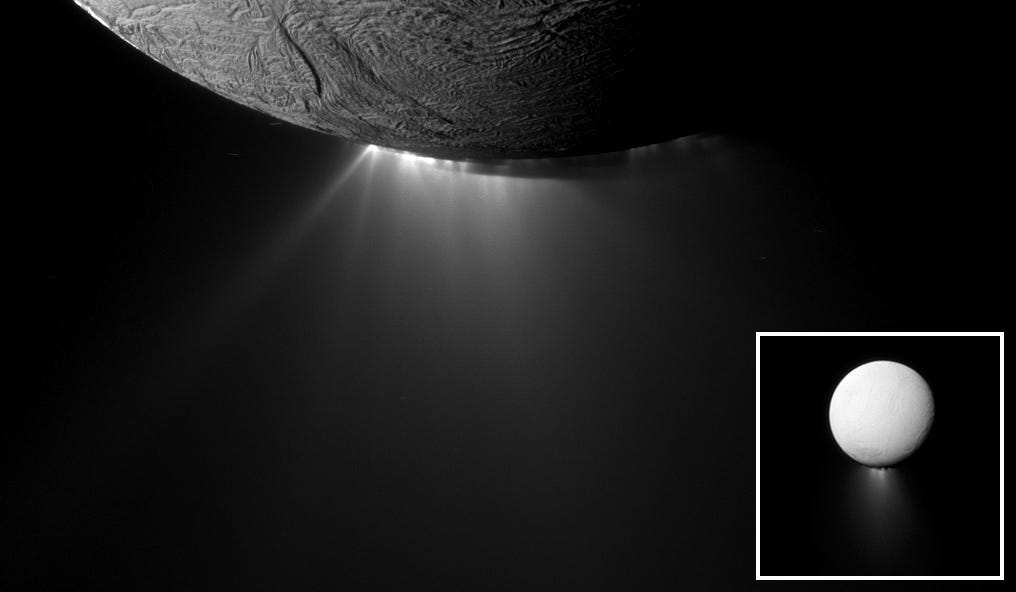
Cassini’s discoveries have made Enceladus a leading place in our solar system to search for life. On Earth, life exists in the deepest, darkest parts of our oceans near hydrothermal vents releasing heat from our planet’s core. Could something similar be happening in Enceladus’ ocean?
Cassini performed what NASA dubbed the “Grand Finale” of its mission in 2017: a number of passes between Saturn and its inner rings. In these close encounters, Cassini measured the mass of the rings based on how the spacecraft was gently tugged towards them, and found them to weigh less than even the small moon Mimas, which is just 200 kilometers wide. Combined with the fact that the rings are bright, undarkened by constant space weathering, this hints that they are less than 100 million years old—very young in geological terms. Cassini ended its mission with an intentional plunge into Saturn in September 2017, becoming a permanent part of the planet it was sent to study.
What’s next?
Cassini left an impressive legacy for future missions. As an all-purpose, flagship spacecraft, it was designed to answer general questions about Saturn and its moons, and help us figure out questions for new missions to answer. We now need dedicated, long-running missions on Titan and Enceladus, if we want to understand their potential for life. Titan’s uncanny resemblance to early Earth has convinced NASA to send the Dragonfly mission to Titan, which will launch in 2027, to explore the moon.
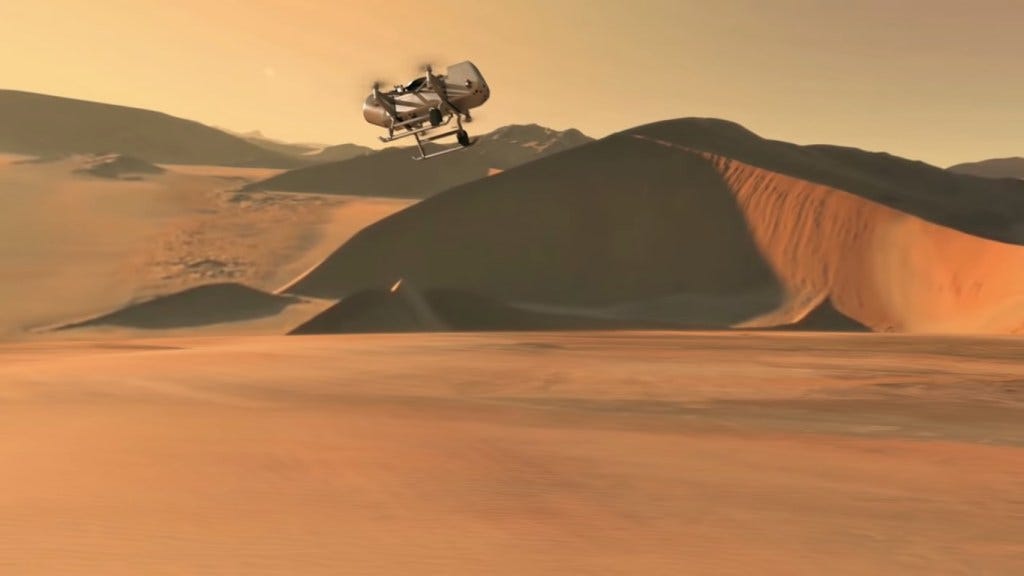
Dragonfly is an eight-bladed drone-like craft called a quadcopter that will fly over dozens of diverse features on Titan, looking for complex chemical processes common to both Titan and early Earth. This could provide clues to how life may have arisen on our planet. In particular, the drone will fly over the impact crater Selk, which once boasted the presence of both liquid water and complex organic molecules key to life for over 10,000 years.
Dragonfly’s instruments are tailored to search for chemical evidence of past and present life on Titan. Because we think Titan’s atmosphere is similar to Earth’s when life arose around 3.5 billion years ago, the mission will help us understand possible starting ingredients for life here and elsewhere. Meanwhile, a dedicated mission to explore Enceladus and its potentially inhabited subsurface ocean awaits. Perhaps another space agency could take that up and complement NASA’s Dragonfly.
I think it will be more exciting to find even microbial life in our solar system than to find intelligent life in another! That’s because if life formed and survived independently in our solar system at two different places in so very different conditions, it massively boosts the idea that the Universe is probably teeming with life! Now let’s go discover some.
Originally published at The Planetary Society.
Like what you read? Support me to keep me going.
